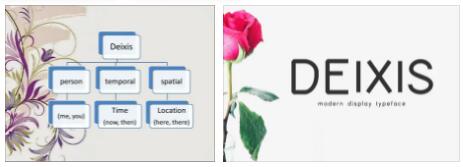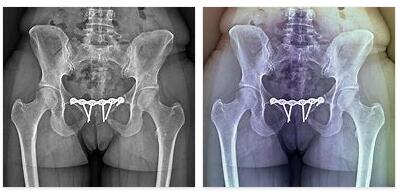Deixis, which can also be indicated as deixis, is a term that comes from the Greek language and is used in linguistics. The deixis is the indication that is specified through components (called deictics ) that refer to a subject, a thing, a time or a place.
Deixis, therefore, is linked to those terms that are used to indicate different elements, which may be present in another part of a message or appear in memory. “These”, “there”, “mine” and “I” are some elements that are part of the deixis.
For example: “I proposed to organize a new meeting for Franuer’s partners, although I don’t think they would be interested”, “If you are looking for the red folder, it is there”, “What are you doing with that notebook? It’s mine!” , “The truth is that I don’t think that way”.
- Abbreviationfinder: Find definitions of English word – Association. Commonly used abbreviations related to word are also included.
Deixis can be said to be an indication.
Deixis and context
As can be seen from these examples, deixis can only be properly interpreted if attention is paid to the context of the speaker. If, in the middle of a face-to-face conversation with another person, he tells us that the keys to the house are “up there”, we will know what he means thanks to his gesture indication.
In a similar sense, the expression “There are always people here in the morning” will only make sense if we know where “here” is . If we just read the sentence without knowing anything about the context, “here” can refer to a hospital, a bank, a square or any other place.
Classification according to the moment
Regarding the moment of the speech in which the necessary contextual tools are provided to understand the meaning of a deixis, it is possible to speak of:
* anaphoric deixis : also called simply anaphora, it is an expression in which the word that gives meaning to the deixis has already been mentioned, with which the context has already been given to the interlocutor to understand the message; for example: “Her expressiveness and her control over her voice: that’s what I like most about this singer”, where the pronoun “that” refers to the previous terms;
* cataphoric deixis : opposite to anaphora, cataphoric deixis indicates a part of the speech that has not yet been emitted or enunciated, but that will appear later; for example: «that’s what I like: that he always finds the right words», where the pronoun «that» only makes sense at the end of the sentence.
To correctly interpret deixis, the context must be considered.
Deixis according to the object of reference
According to the object of reference, deixis can be classified into categories such as time deixis, place deixis and others.
Social deixis
It is an expression that mentions a participant through a deictic element. In addition, it can fulfill the function of distinguishing the person according to social status, the type of relationship that exists between the speakers or the age of the interlocutor; This is appreciated when “usted” is used instead of “tú” or “vos”, as the second person singular.
Personal deixis
In this case, the deictic type expression serves to refer to the role that a given participant has, and can be used for all people, both singular and plural. Some personal deixis, including determiners and pronouns, are you, you, your, your, yours, and yours.
Deixis of place
Through this class of deixis it is possible to indicate the space in which a given participant is located, also providing an idea of his distance from the interlocutor, although with very little precision ; Some examples are there, here and there.
Deixis of time
It serves to mention a certain time, always taking the moment in which the message is issued as a point of reference, as occurs with the terms today, tomorrow and yesterday.



